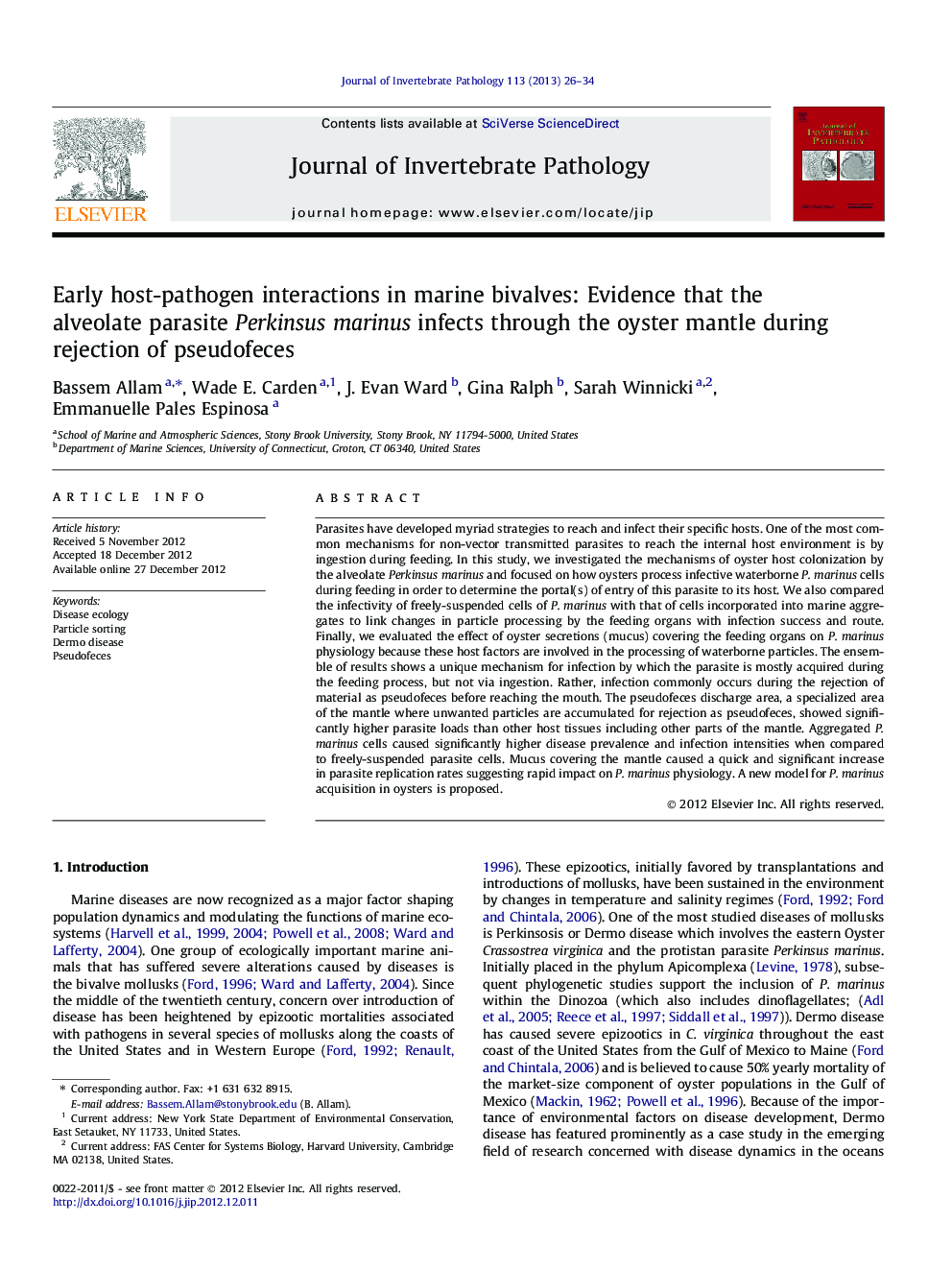| Article ID | Journal | Published Year | Pages | File Type |
|---|---|---|---|---|
| 4557829 | Journal of Invertebrate Pathology | 2013 | 9 Pages |
Parasites have developed myriad strategies to reach and infect their specific hosts. One of the most common mechanisms for non-vector transmitted parasites to reach the internal host environment is by ingestion during feeding. In this study, we investigated the mechanisms of oyster host colonization by the alveolate Perkinsus marinus and focused on how oysters process infective waterborne P. marinus cells during feeding in order to determine the portal(s) of entry of this parasite to its host. We also compared the infectivity of freely-suspended cells of P. marinus with that of cells incorporated into marine aggregates to link changes in particle processing by the feeding organs with infection success and route. Finally, we evaluated the effect of oyster secretions (mucus) covering the feeding organs on P. marinus physiology because these host factors are involved in the processing of waterborne particles. The ensemble of results shows a unique mechanism for infection by which the parasite is mostly acquired during the feeding process, but not via ingestion. Rather, infection commonly occurs during the rejection of material as pseudofeces before reaching the mouth. The pseudofeces discharge area, a specialized area of the mantle where unwanted particles are accumulated for rejection as pseudofeces, showed significantly higher parasite loads than other host tissues including other parts of the mantle. Aggregated P. marinus cells caused significantly higher disease prevalence and infection intensities when compared to freely-suspended parasite cells. Mucus covering the mantle caused a quick and significant increase in parasite replication rates suggesting rapid impact on P. marinus physiology. A new model for P. marinus acquisition in oysters is proposed.
Graphical abstractFigure optionsDownload full-size imageDownload as PowerPoint slideHighlights► The mechanism of oyster colonization by Perkinsus marinus was investigated. ► Freely suspended P. marinus cells were rejected in pseudofeces. ► Aggregated P. marinus cells caused higher disease levels than freely-suspended cells. ► Infection was initiated in the mantle. ► A new model for P. marinus acquisition in oysters is proposed.
